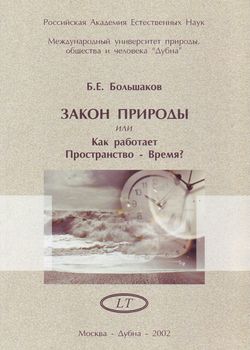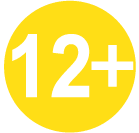- In the upper left corner before the title of the article you must specify the UDC (Universal Decimal Classification) and / or the BBC and / or DOI and / or other indices or classification systems: Times New Roman, 10 pt, capital letters, normal font, text aligned to the left, 12 pt interval after the text.
- Article title: Times New Roman, 14 pt, in capital letters, bold, text aligned to the left, 12 pt interval after the text. Title of the article should not contain more than 80 characters, including spaces. Hyphenation and multiple paragraphs are not allowed. Point at the end of the article’s title is not assigned.
- Information about the author(s): Times New Roman, 10 pt, regular font, text aligned to the left, including:
- full name (surname, first name, middle name);
- academic degree;
- academic title;
- place of work of each author; should be clearly written, not allowing other interpretations; if all the authors work or study in the same institution, you can omit the place of work of each author separately;
- the name of the institution where the work was performed;
- electronic and postal addresses and telephone numbers of authors and people responsible for the correspondence related to the article.
- Abstract: the article is preceded by a brief summary (up to 10 lines), Times New Roman, 12 pt, regular, italic, text aligned by width, 12 pt interval after the text. The abstract should indicate the purpose of the study, basic procedures and methods, results and conclusions. It should highlight all the new and important aspects of research. We recommend using quantitative indicators where possible.
- Keywords after the abstract (one or two lines): Times New Roman, 10 pt, normal font, capital letters, text aligned to the left, 12 pt interval after the text. Each keyword or phrase should by separated by a comma.
- The article itself. Formatting options for the main text:
- format — A4;
- font — Times New Roman, 12 pt, normal;
- line spacing — half;
- indention — 1.25;
- margins: top — 2 cm, bottom — 2 cm, left — 2.5 cm, right — 2.5 cm;
- page numbers at the top right corner of the page.
The main part of the article should contain an introduction to the problem, and the justification for the purpose of research or development, reference works directly related to the subject, materials and methods, experimental part, results, discussion, practical application of the findings or conclusions.
Small parts of the text may be italic or underlined in order to emphasize the most important ideas.
- If the article contains thematic sections, the headings should be: Times New Roman, 12 pt, bold, aligned to the left, indent 1.25; 6 pt interval after the text.
- Explanation of abbreviations should be given when they are first used.
- Figures should be clear and presented in the text, as well as separate files (*.tif, *.jpg, *.gif), on a white background in black and white or color version. Each figure should have a caption signature (name and serial number): Times New Roman, 10 pt, bold, centered text, 6 pt interval after the name) and placed in the text after the reference to it.
- Tables should be clear, stretched to the page width. Tables are also placed after the references in the text. Each table should have the serial number and name (Times New Roman, 10 pt, bold, centered text, top of the table, 6 pt interval before the text). Row and column headers should be formulated concisely and accurately. You should use common abbreviations and approved SI units of measurement. If you use other units, it should be stipulated separately. Single table or figure in the article should not be numbered!
- For adding formulas to the text you should use the Equation Editor for Word (Microsoft Equation) with standard settings: text – 11 pt, large index – 8 pt, small – 6 pt, large symbol – 12 pt, small symbol – 10 pt. Equations should be numbered. However, if there are no additional specific formula references in the text, numeration is not needed.
- Greek and Latin letters used in the text should be typed in italics and be in accordance with the International System (SI).
- Links to materials published in traditional way as well as in electronic form should be typed in square brackets (indicating the name of the author and year of publication) in order of appearance. Example: A completely different approach to the problem is provided in [Ivanov A.A., 2005]. That allowed the author…
- List of references should be carefully planned, numbered and presented in alphabetical order (first Russian-writing authors, then — foreign). Links should correspond to:
- GOST 7.0.5-2008 Bibliographic references. General requirements and rules (implementation date 01.01.2009)
- GOST 7.1-2003 Bibliographic record. Bibliographic description. General requirements and rules (implementation date 07.01.2004)
- GOST 7.82-2001 Bibliographic record. Bibliographic description of electronic resources. General requirements and rules (implementation date 07.01.2002)
Examples:
References
- Bolshakov, B.E. The Law of Nature or How the Space-Time Works / B.E. Bolshakov. — Moscow–Dubna: Russian Academy of Natural Sciences, International University of Nature, Society and Man “Dubna”, 2002. — 265 p.
- Kuznetsov, O.L. The “Nature – Society – Man” System: Sustainable Development / O.L. Kuznetsov, P.G. Kuznetsov, B.E. Bolshakov. — Moscow–Dubna: Noosphere, International University of Nature, Society and Man “Dubna”, 2002. — 392 c.
In case of the apparent disparity between the rules and the provided text, the article is returned to the authors for revision for a period of no more than 7 days. Failure to correct the text during the given period (7 days) results in rejection by the Editorial Board.
Additional materials of other types may be accepted for publication by the Editorial Board after the discussion of terms with the authors.

 ПОСЛЕДНИЕ ЭКЗЕМПЛЯРЫ ТИРАЖА
ПОСЛЕДНИЕ ЭКЗЕМПЛЯРЫ ТИРАЖА


